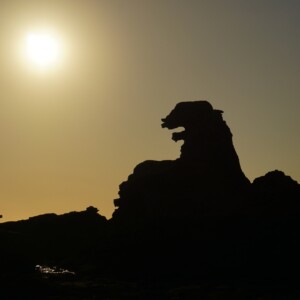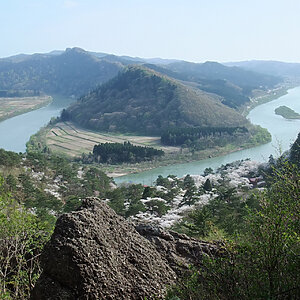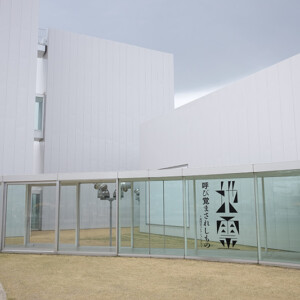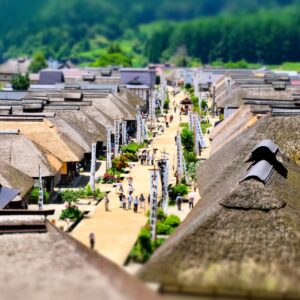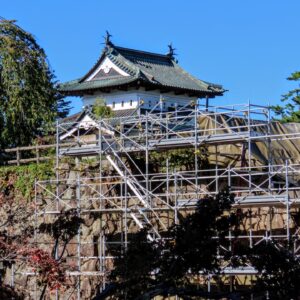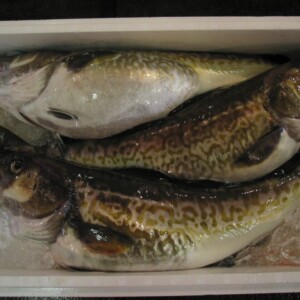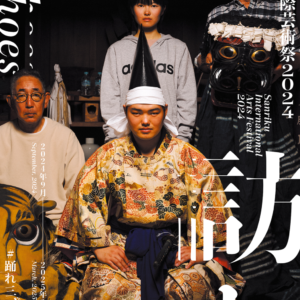
[Chokaisan and Tobishima Geopark: Yusa and Sakata Edition] Shonai Hirano is moist with the blessings of Mt. Chokaisan
table of contents
- 1 Mt. Chokai took its current form due to a large eruption during the Edo period.
- 2 The Shonai Plain east edge fault zone continues in a straight line for 35km.
- 3 The rich water of Mt. Chokai that nourishes the Shonai plains
- 4 “Miko no Mizu” is a blessing from the mountain of God that is essential for daily life.
- 5 Ushiwatari River and Maruike made of spring water
- 6 Chokaisan Omonoki Shrine, whose object of worship is Mt. Chokai, the mountain of the gods.
- 7 16 Arhat Rocks carved into lava to commemorate marine accidents
- 8 Articles related to Mt. Chokai and Tobishima Geopark
Mt. Chokai is a rare mountain with two peaks (East Chokaisan Shinzan and Nishichokaisan Nabemori) that continue from 0m above the Sea of Japan to the summit at 2,236m. Because of the beauty of his appearance, he is called "Dewa Fuji."
It is an active volcano, and people living at Yusa, Sakata, and Zogata (Kisakata, Nikaho City, Akita Prefecture) and Yuri (Yuri, Yurihonjo City, Akita Prefecture) are sometimes ignite and fear Mount Chokai, which shakes the earth, and have also worshiped it as a mountain where God resides as an entity that brings rich water.
Mt. Chokai took its current form due to a large eruption during the Edo period.
Mt. Chokai began operating about 550,000 years ago, and it is said that lava covered the surface of Mt. Nishichokai (Nabemori Lava Dome/Nabemori Yogan Dome/Altitude 1,652m) about 160,000 to 20,000 years ago.
About 20,000 years ago, it was the time when Mount East Chokai was formed in the eastern part of the mountain body, and about 2,600 years ago, the summit of Mount East Chokai collapsed, and the lava formed a crater (caldera), and the deposits created the topography at the foot of the mountain.
Of the two central crater cones on Higashi-Chokaisan, Shinzan (2,236m) is a lava dome that occurred in the eruption in 1801 (Kyowa 1), and is also known as Kyowa-dake.
Mt. Chokai eruptions occurred frequently until the late Heian period (900s). After that, there were no records of eruptions in the mid-1600s, and activity started again around 1659. In 1801, the largest eruption in history occurred.
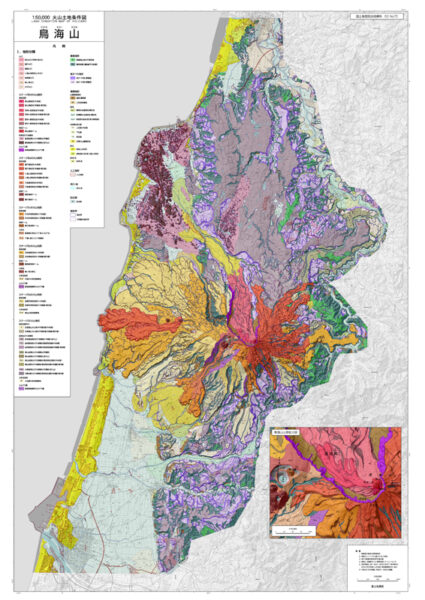
Traces of a large eruption left on the mountain and the Shonai Plain
The phreatic eruptions that began in 1800 gradually became more intense, and in late August 1801 a large explosion occurred, killing eight climbers. In 1804 (Bunka 1), a large earthquake (Shogata Earthquake) occurred, causing extensive damage to the area at the foot of the mountain.
No large-scale eruptions have occurred since then. The most recent eruption was a small-scale phreatic eruption that occurred near Mt. Shinzan in 1974, with mudflow and ash fall confirmed. Additionally, in 1987 (Showa 62), an earthquake swarm occurred.
The active volcano, Mt. Chokai, changed the shape of the earth every time an eruption or earthquake occurred, and attacked people. The traces still remain as terrain unique to the Shonai region, such as faults and lava flows. Its unique terrain is certified as , Mt. Chokai and Tobishima Geopark
Mt. Chokai and Tobishima Geopark <Information>
- Phone number: 0184-62-9777 (Mt. Chokai/Tobishima Geopark Promotion Council Secretariat)
- URL: Mt. Chokai/Tobishima Geopark
Lava dome Shinzan with the remains of a violent explosion

Niiyama is a lava dome that was formed during the major explosion on Mt. Higashi Chokai in 1801 , and is 70m tall from the crater field.
You can climb up to Niyama, about 5 hours and 30 minutes from the Ohiraguchi hiking trail (Yusa Town, Yamagata Prefecture) and Hokodate hiking trail (Nikaho City, Akita Prefecture), and about 20 minutes from the Omuro hut (Omuro visitor cedar/Omuro sanrojo/accommodation) located next to the main shrine of Chokaisan Omono Imijinja.
The large rock near the main shrine of the mountain peak is a volcanic bullet that flew at the time of the birth of Niiyama, weighing 300 tons. It shows how intense the Niiyama eruption was.
Lake Chokai, a crater lake full of water from melting snow
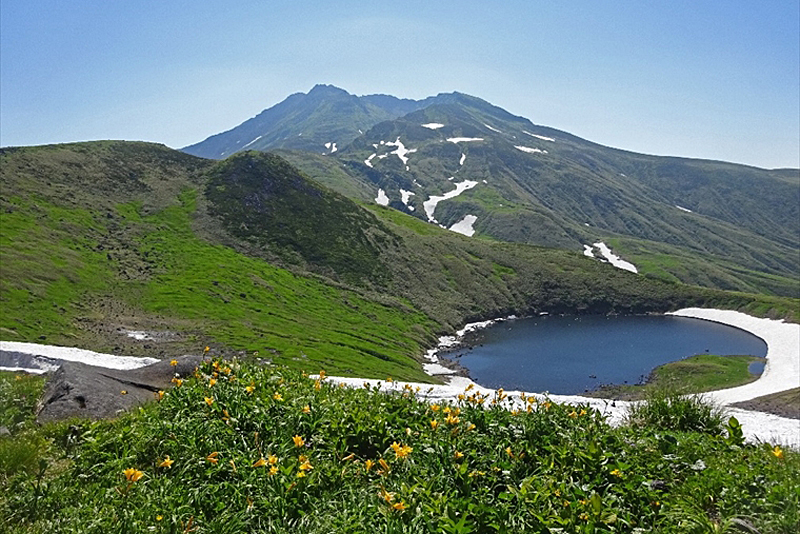
Lake Chokai (Chokaiko/Torinoumi/Torinoumi) is a crater lake located about 1,600m above West Chokaisan, about 3km west of Niiyama (Higashi Chokaisan).
It has a diameter of about 200m and has an oval shape that is long north and south. The water is the melting of snow, and in the harsh winter, everything freezes to the bottom of the lake, which is 4.7m deep. Nearby is Torinoumi Mihama Shrine, and the accommodation facility, Mihama Hut (Mihama Shrine Cage).
Normal fault group of Mt. Chokai running along the mountainside

There is a group of active faults unique to volcanoes on the mountainside of Mt. Chokai. Many of them are distributed from the horseshoe-shaped caldera of Mt. Nishichokai (Nishichokaiba-shaped caldera) to the west slope, and near Gassan Mori (1,650 m).
The active fault on Mt. Chokai is a normal fault, which is commonly found in Kyushu in Japan, and is a rare fault in northern Japan. The one on the Nishiyama side is called the Azami Fault, and it lasts for 2.5km of cliffs with a maximum drop of about 30m. The Gassanmori Fault is 1.5km long with a maximum drop of approximately 50m.
The Shonai Plain east edge fault zone continues in a straight line for 35km.
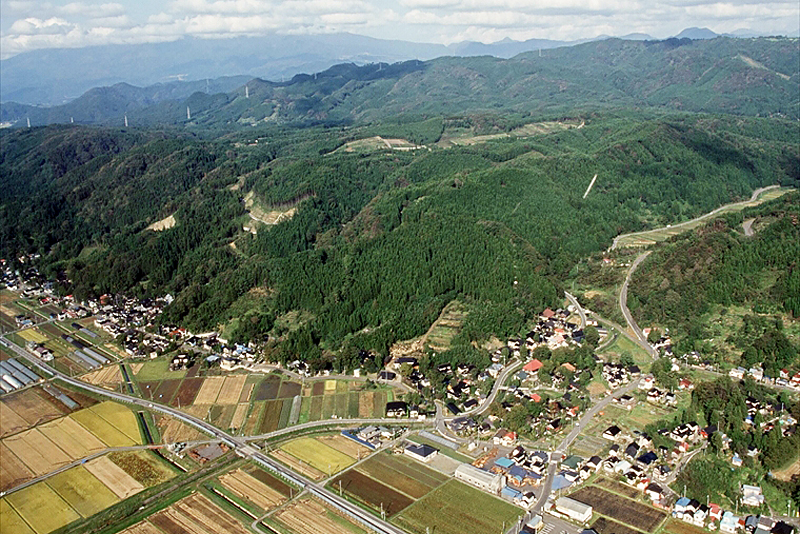
Active faults continue in the Shonai Plain, stitching the edges of the plains. the Shonai Plain Eastern Fault Zone , and runs 35km south of Yusacho, the base of Mt. Chokai, and continues to Sakata City, Shonai Town, and Tsuruoka City.
As of 2022, the earthquake rate within 100 years in the Shonai Plain Eastern Fault Zone is 0% in the north and within 20% in the south (published on October 19, 2009, Earthquake Headquarters, Earthquake and Disaster Prevention Research Division, Ministry of Education, Culture, Sports, Science and Technology Research and Development Bureau, Ministry of Education, Culture, Sports, Science and Technology), but in the past it is said that the Shonai earthquake in 1894 (Meiji 27), and since it is a live fault, sufficient vigilance is required.
The rich water of Mt. Chokai that nourishes the Shonai plains
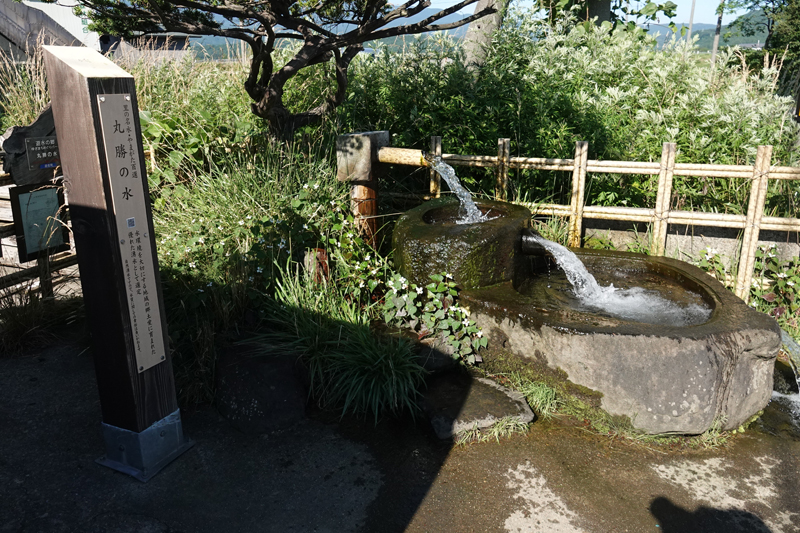
The Motomachi district in the center of Yuza Town is located on the alluvial fan of the Gekko River, which originates from Mt. Chokai, and is extremely rich in groundwater. Therefore, when the wells are dug, water gushes out, and there are approximately 300 of them, producing an amount of 4,200 tons per day.
Yusa Motomachi Spring Park a walking course along the Gekko River from in front of Yusa Station , offers free access to 14 self-splitting wells, with the kindness of the owner. However, although testing is OK, it is not sterilized so you can drink it at your own risk.
Yusa Motomachi Spring Group <Information>
- Facility name: Yusa Motomachi Yusui Group (Machimeguri Park)
- Location: Around JR Yusa Station, Yuza-cho, Yamagata Prefecture
- Phone number: 0234-72-5666 (Yusachokai Tourism Association)
- URL: Machimeguri Park
“Miko no Mizu” is a blessing from the mountain of God that is essential for daily life.

The water from the Kamiko is a washing area using spring water located in Mega village in Yusa Town.
Eka is a shoreline village where the foot of the gods mountain, Chokai, sinks into the Sea of Japan, and the spring water is named "Shinsen Water" because it is water drawn from the gods mountain. The spring is divided into six aquariums, divided by use.
Miko's Water <Information>
- Facility name: Miko no Mizu
- Location: 64 Fukiura Mega, Yusa-machi, Akumi-gun, Yamagata Prefecture
- Phone number: 0184-62-9777 (Mt. Chokai/Tobishima Geopark Promotion Council Secretariat)
- access
- Car: From Yamagata Expressway Sakata Minato IC, take National Route 7 towards Akita for about 25 minutes.
- Railway/Approximately 5 minutes walk from JR Uetsu Main Line Mega Station
- Toilet: None
- Parking: None
- URL: Miko no Mizu
Google Map
Ushiwatari River and Maruike made of spring water

The Ushiwatarigawa is a short river with a total length of about 4km in the area on the Sea of Japan side of Mt. Chokai, and almost 100% of the flow is spring water. The water temperature is around 11°C throughout the year, and salmon travels upstream in autumn.
Maruike-sama (Maruike-sama) is a spring-fed pond with a diameter of approximately 20m and a depth of 3.5m located near the Ushiwatari River. It is one of the sources of the Ushiwata River, and on its banks is Maruike Shrine, whose deity is Maruike-sama.
Ushiwatagawa and Maruike <Information>
- Facility name: Ushiwatari River and Maruike-sama
- Phone number: 0234-72-5666 (Yusachokai Tourism Association)
- access
- Car: From Yamagata Expressway Sakata Minato IC, take National Route 7 towards Akita for about 25 minutes.
- About 5 minutes by car from Fukiura Station on the Railway/JR Uetsu Main Line
- Toilet: Available (temporary)
- Parking: Available (free)
Google Map
Chokaisan Omonoki Shrine, whose object of worship is Mt. Chokai, the mountain of the gods.
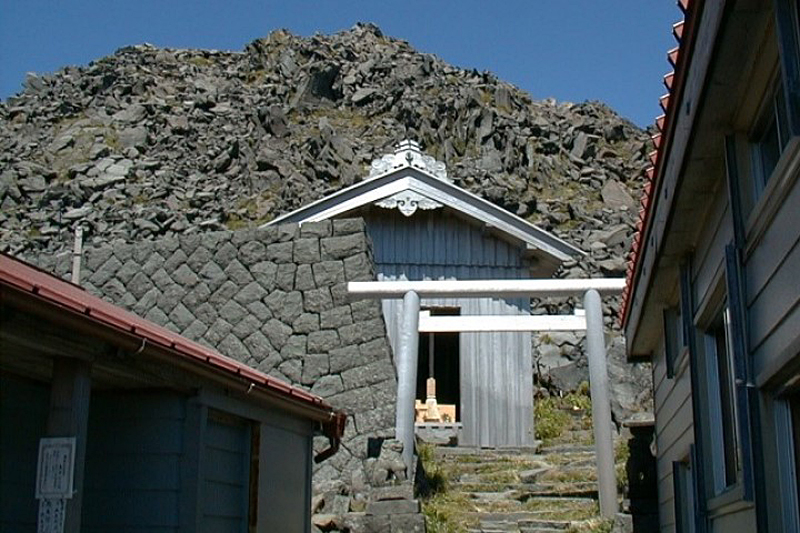
Chokaisan Daimonoki Shrine is a shrine where prayers were offered to calm the wrath of Mt. Chokai, and is said to have been founded in 564 (25th year of the 29th Emperor Kinmei Reign), in the late Kofun period. The main shrine of the summit of Mt. Chokaisan Daimono-i Shrine, at its headquarters, is located on the summit of Mt. Chokaisan, near Niiyama, and at the foot of the shrine is home to two villages called "Kuchinomiya" in two locations: Fukiura (Fukura/Touraisan Daimono-i Shrine Fukiuraguchinomiya) and Warabioka (Warabioka/Touraisan Daimono-i Shrine Warabiokaguchinomiya).
In the late Heian period, it was ranked as the No. 1 shrine in Dewa Province and is the highest shrine in Dewa Province. The main shrine at the top of the mountain is rebuilt every 20 years, just like Ise Grand Shrine.
Chokaisan Daimono-i Shrine, the main shrine of the summit <Information>
- Facility name: Mt. Chokai Daimono I Shrine, main shrine
- Location: Mt. Chokai summit
- Phone number: 0234-77-2301
- Official URL: Chokaisan Daimono I Shrine
Google Map
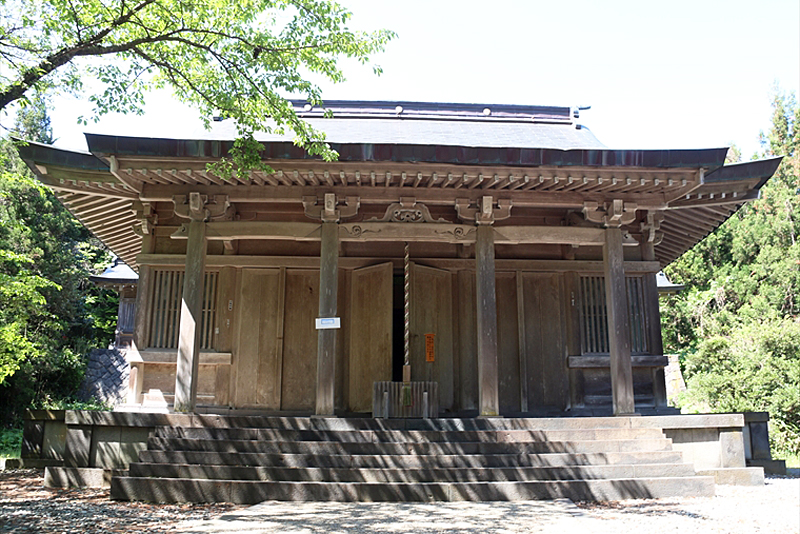
Chokaisan Daimono I Shrine Fukiuraguchinomiya <Information>
- Facility name: Mt. Chokai Daimono I Shrine Fukiuraguchinomiya
- Location: 1 Fukura, Fukiura, Yusa-machi, Akumi-gun, Yamagata Prefecture
- Phone number: 0234-77-2301
- Official URL: Chokaisan Daimono I Shrine
Google Map
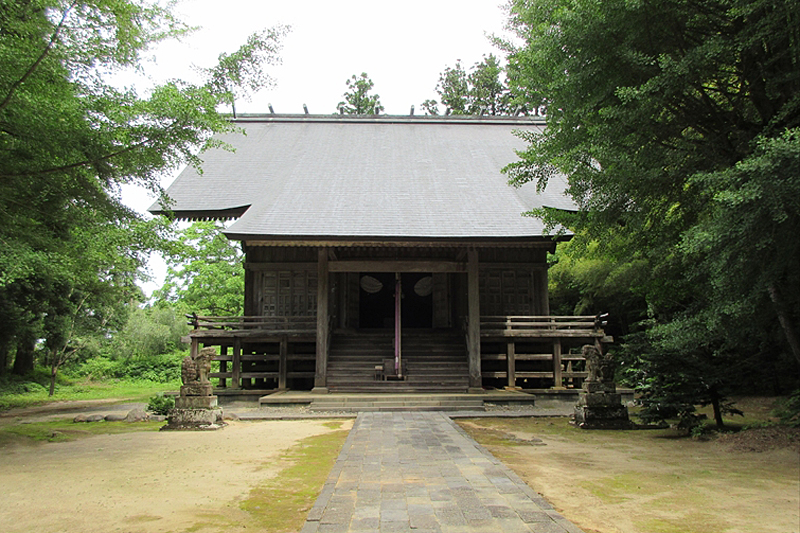
Chokaisan Daimono I Shrine Warabiokaguchinomiya <Information>
- Facility name: Warabiokaguchinomiya, Mt. Chokaisan Daimonomi Shrine
- Location: 51 Matsugaoka, Kamwaraoka, Yuza-machi, Akumi-gun, Yamagata Prefecture
- Phone number: 0234-77-2301
- Official URL: Chokaisan Daimono I Shrine
Google Map
16 Arhat Rocks carved into lava to commemorate marine accidents
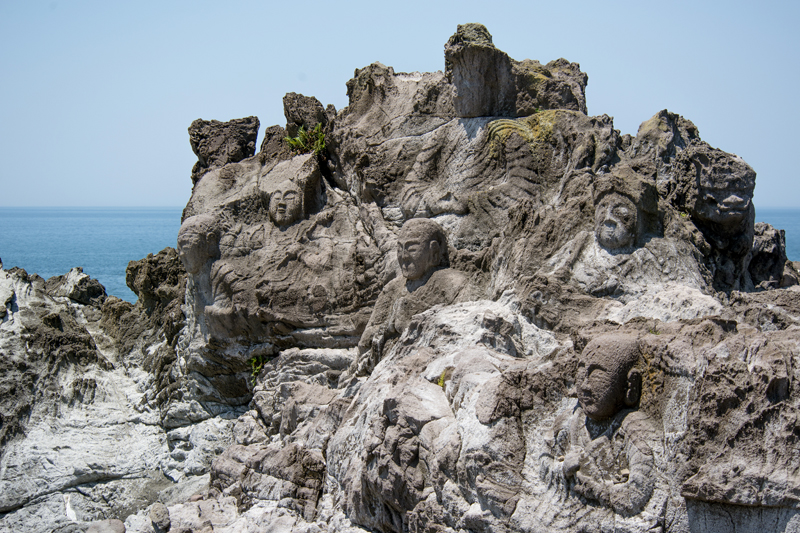
The Jurokurakaniwa is a cliff Buddha carved into lava carved into the lava that flows out of Mt. Chokai on the coast near Fukiura Fishing Port facing the Sea of Japan. There are 22 Buddhas carved together, including 16 Arhat statues (a saint who has achieved the highest level of practice), Monjubosatsu and Fugen Bodhisattva.
The Magaibutsu was carved in the first year of the Meiji era, mainly by the priest Kankai of Fukiura Kaizenji Temple, as a memorial service for the fishermen who died in maritime accidents, and a prayer for safety at sea.
16 Rakan Rocks<Information>
- Facility name: Juroku Rakan Rock
- Location: Fukiura Nishitate, Yusa-machi, Akumi-gun, Yamagata Prefecture
- Phone number: 0234-72-5666 (Yusachokai Tourism Association)
- Free tour
- access
- Car: Approximately 15 minutes from Yusahiko IC on the Nihonkai-Tohoku Expressway
- Railway/Approximately 15 minutes walk from Fukiura Station on the JR Uetsu Main Line
- URL: 16 Rakan Rocks








![[Chokaisan and Tobishima Geopark: Yurihonjo Edition] A strata from when Japan was the Eurasian continent can be seen B5C46A18BC0CC0CC0E9AD08084EAA5B](https://jp.neft.asia/wp-content/uploads/2024/04/b5c46a18bc0cc79de0e9ad08084eaa5b-150x150.jpg)
![[Chokaisan and Tobishima Geopark: Nikaho Edition (2)] Coexistence with nature brought about by the wisdom of our ancestors 1 Nikaho Plateau 2000 Nikaho City Cultural Property Protection Division](https://jp.neft.asia/wp-content/uploads/2024/10/28389310d744abdc1b4ca5d863e123e7-150x150.jpg)
![[Chokaisan and Tokishima Geopark: Tokishima Edition] Tokishima flourished in Kitamae Ship during the Edo period b78c09f26796b9608d6c3fb7a83ecc50](https://jp.neft.asia/wp-content/uploads/2023/05/b78c09f26796b9608d6c3fb7a83ecc50-150x150.jpg)
![[Chokaisan and Tobishima Geopark: Nikaho Edition (1)] Kujukushima, which is known alongside Matsushima, was landed in a major earthquake. 1999 Island Winter 1_Nikaho City Tourism Division](https://jp.neft.asia/wp-content/uploads/2024/10/9832b69b3165ff52241c17ad3f8bf591-150x150.jpg)
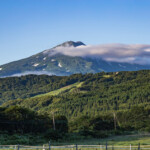
![The historical heritage of Yurihonjo City, which was established by three domains during the Edo period [Akita Prefecture] Tensagi Castle, a theme park that collects the history of the former Kameda domain ©Tabi Tohoku](https://jp.neft.asia/wp-content/uploads/2024/07/78f1019a234bb8928a04b0041a2a581d-150x150.jpg)
![The Wooden Toys Museum is making use of the entire abandoned school! Access by toy train [Yurihonjo, Akita Prefecture] 02 Chokaisan Wooden Toy Museum](https://jp.neft.asia/wp-content/uploads/2018/11/cce286efc423e9c7e7b7514902aaaac3-150x150.jpg)



